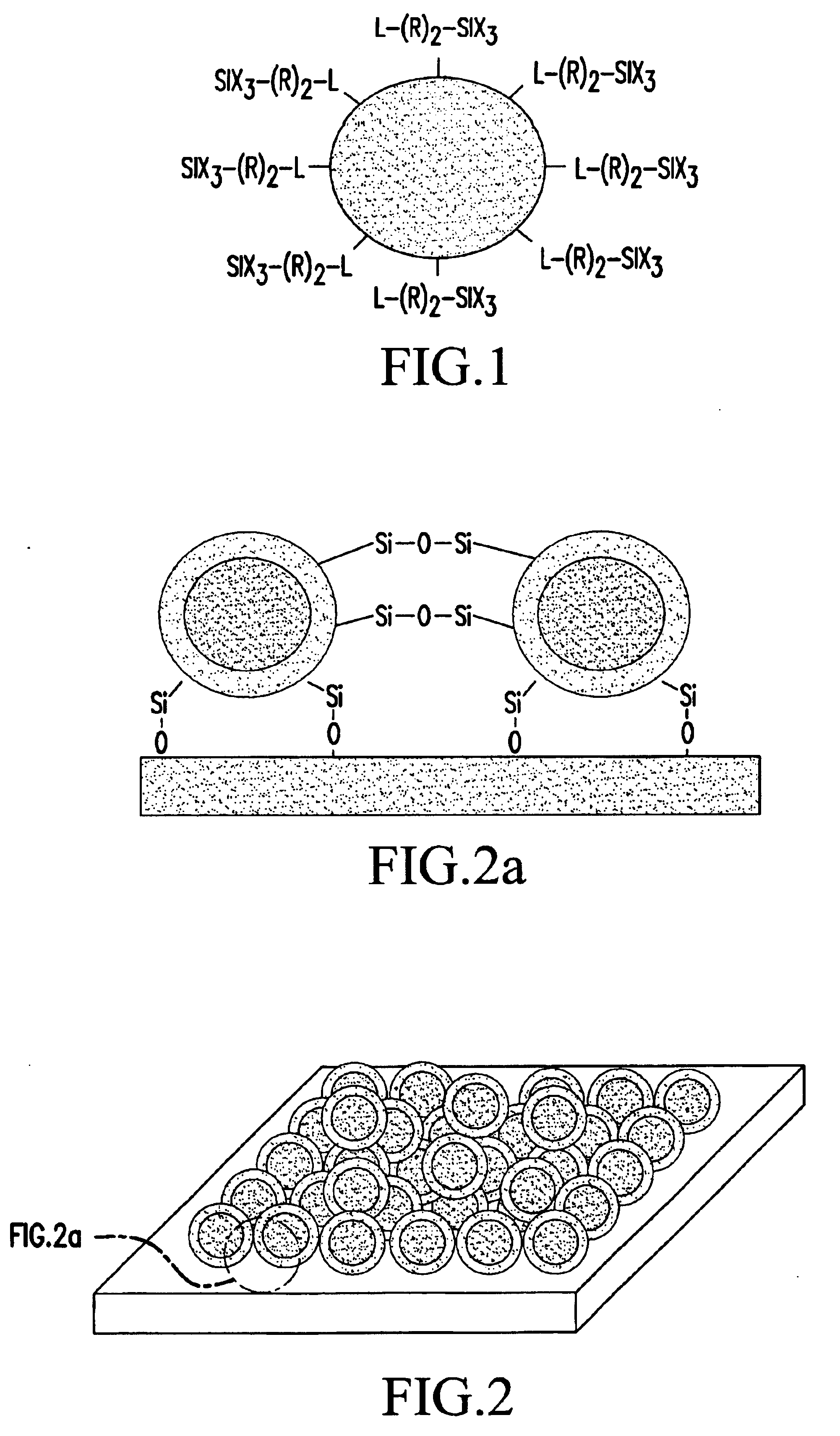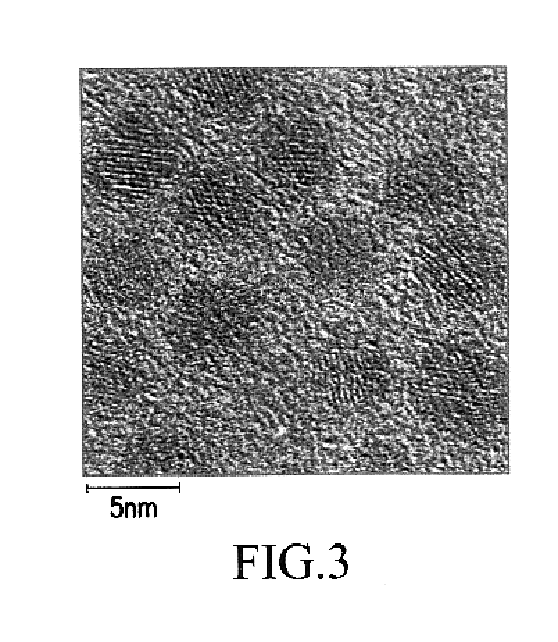Method for producing quantum dot silicate thin film for light emitting device
a technology of light emitting devices and quantum dots, which is applied in the direction of electrolytic capacitors, nanoinformatics, semiconductor lasers, etc., can solve the problems of limiting the fabrication of group ii and vi compound semiconductors, unable to achieve the commercialization of devices fabricated by the above-mentioned techniques, and difficulty in controlling density and uniformity, so as to achieve high luminescence efficiency and increase the density of quantum dots
- Summary
- Abstract
- Description
- Claims
- Application Information
AI Technical Summary
Benefits of technology
Problems solved by technology
Method used
Image
Examples
first embodiment
the present invention relates to a method for producing a quantum dot thin film with excellent mechanical and thermal stability by displacing the surface of nanometer-sized compound semiconductor quantum dots synthesized by a wet chemistry technique with a silane compound having at least one reactive group for a sol-gel process, and subjecting the surface-displaced quantum dots to a sol-gel process.
The method of the present invention will be explained in terms of the respective steps.
Synthesis of Quantum Dots
In the present invention, the synthesis of quantum dots can be performed by all techniques known in the art, and thus is not limited to the procedure as described below.
For the synthesis of nanometer-sized quantum dots in the state of a colloid by a wet chemistry technique, a solvent capable of stably dispersing quantum dots is used. The solvent used in the present invention must be able to be coordinated to the surface of quantum dots, and have a bulkiness to the extent that it...
second embodiment
the present invention relates to the method for producing a quantum dot silicate thin film by dispersing quantum dots synthesized by a wet chemistry technique in a silicate precursor compatible with the quantum dots, and coating the dispersion onto a substrate. The synthesis of the quantum dots is as explained above. The subsequent steps will be described below.
Preparation of Silicat Precursor
As a silicate precursor, a siloxane resin having a weight average molecular weight of about 1,000-100,000 and preferably about 1,000-10,000, is used. The silicate precursor is prepared by subjecting a silane compound having a phosphine-, amine- or thiol-based functional group and at least one reactive group for a sol-gel process, and a siloxane-based monomer to a sol-gel process under acidic or basic conditions. At this time, the sol-gel process involves hydrolysis and condensation. The molar ratio of the silane compound and the siloxane-based monomer is, preferably, 99:1-1:99.
As the siloxane-b...
example 1
Synthesis of Yellow Light-Emitting Cadmium Sulfide Quantum Dots
2.5 ml of trioctyl amine as a solvent is placed in a 25 ml flask equipped with a reflux condenser, and the temperature of the flask is adjusted to 180° C. with stirring. A solution of 50 mg of cadmium dithio diethyl carbamate in 0.9 ml of trioctyl phosphine is rapidly injected into the flask. After 10 minutes, a solution of 20 mg of zinc dithio diethyl carbamate in 0.3 ml of trioctyl phosphine is slowly added dropwise. About 5 minutes after the addition of zinc dithio diethyl carbamate is completed, the temperature of the reactor is cooled and then ethanol is added to quench the reaction. Quantum dots are obtained from the resulting mixture through centrifugation and dispersed in toluene. The photoluminescence spectrum confirmed that the compound semiconductor quantum dots emits yellow light at 536 nm.
PUM
| Property | Measurement | Unit |
|---|---|---|
| size | aaaaa | aaaaa |
| temperature | aaaaa | aaaaa |
| size | aaaaa | aaaaa |
Abstract
Description
Claims
Application Information
 Login to View More
Login to View More - R&D
- Intellectual Property
- Life Sciences
- Materials
- Tech Scout
- Unparalleled Data Quality
- Higher Quality Content
- 60% Fewer Hallucinations
Browse by: Latest US Patents, China's latest patents, Technical Efficacy Thesaurus, Application Domain, Technology Topic, Popular Technical Reports.
© 2025 PatSnap. All rights reserved.Legal|Privacy policy|Modern Slavery Act Transparency Statement|Sitemap|About US| Contact US: help@patsnap.com



